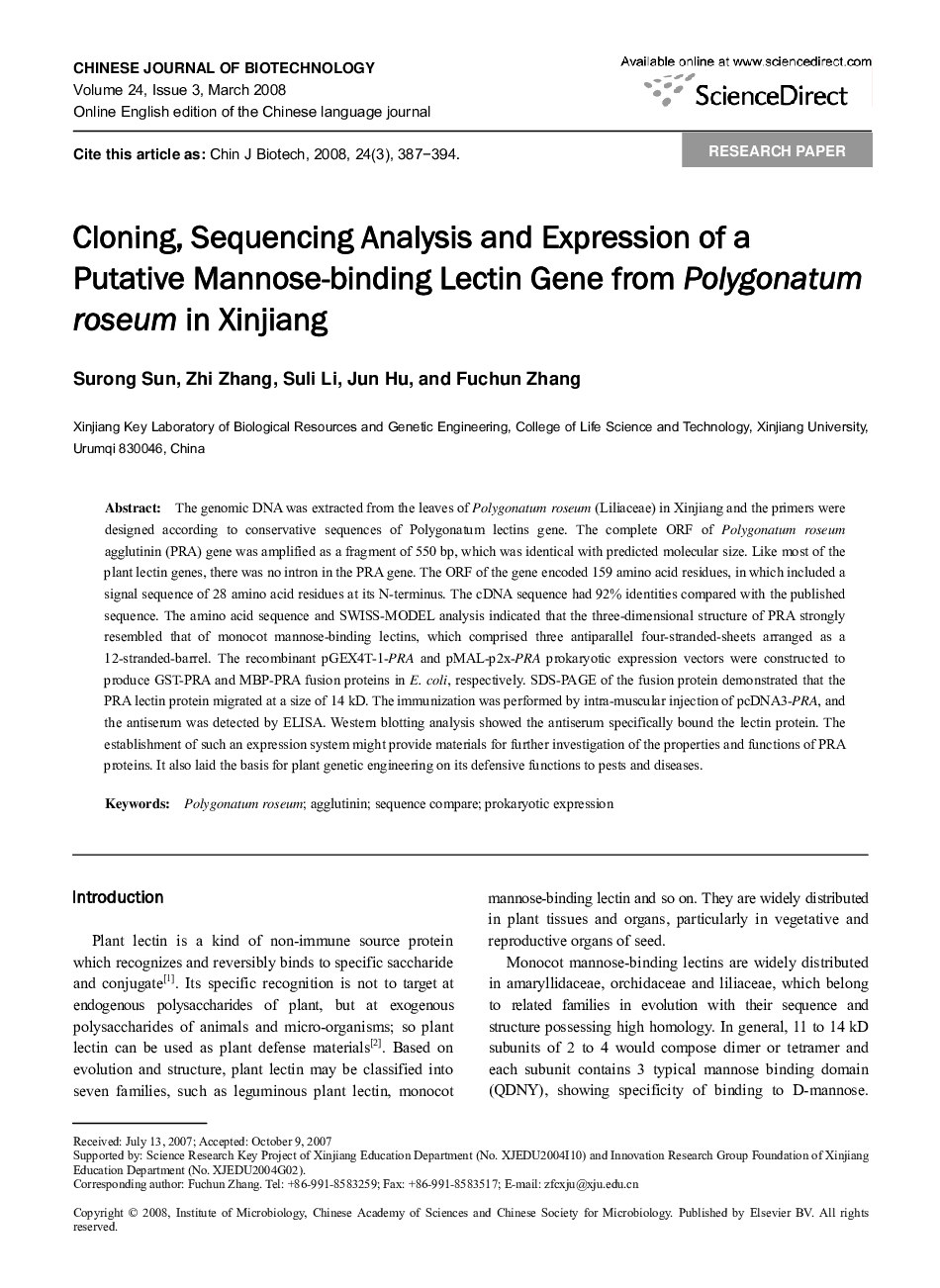| Article ID | Journal | Published Year | Pages | File Type |
|---|---|---|---|---|
| 2078848 | Chinese Journal of Biotechnology | 2008 | 8 Pages |
Abstract
The genomic DNA was extracted from the leaves of Polygonatum roseum (Liliaceae) in Xinjiang and the primers were designed according to conservative sequences of Polygonatum lectins gene. The complete ORF of Polygonatum roseum agglutinin (PRA) gene was amplified as a fragment of 550 bp, which was identical with predicted molecular size. Like most of the plant lectin genes, there was no intron in the PRA gene. The ORF of the gene encoded 159 amino acid residues, in which included a signal sequence of 28 amino acid residues at its N-terminus. The cDNA sequence had 92% identities compared with the published sequence. The amino acid sequence and SWISS-MODEL analysis indicated that the three-dimensional structure of PRA strongly resembled that of monocot mannose-binding lectins, which comprised three antiparallel four-stranded-sheets arranged as a 12-stranded-barrel. The recombinant pGEX4T-1-PRA and pMAL-p2x-PRA prokaryotic expression vectors were constructed to produce GST-PRA and MBP-PRA fusion proteins in E. coli, respectively. SDS-PAGE of the fusion protein demonstrated that the PRA lectin protein migrated at a size of 14 kD. The immunization was performed by intra-muscular injection of pcDNA3-PRA, and the antiserum was detected by ELISA. Western blotting analysis showed the antiserum specifically bound the lectin protein. The establishment of such an expression system might provide materials for further investigation of the properties and functions of PRA proteins. It also laid the basis for plant genetic engineering on its defensive functions to pests and diseases.
Keywords
Related Topics
Life Sciences
Biochemistry, Genetics and Molecular Biology
Biotechnology
Authors
Surong Sun, Zhi Zhang, Suli Li, Jun Hu, Fuchun Zhang,
